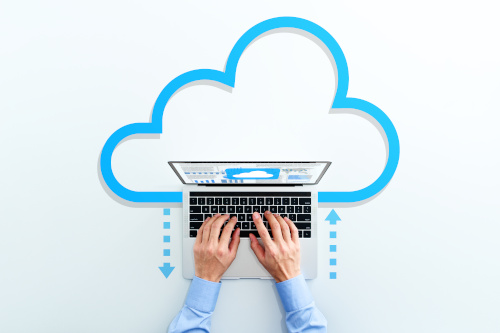As school districts emerge from the worst of COVID-19, they’re bringing with them new priorities. Many of the changes that districts have made during the pandemic, such as giving employees the flexibility to work remotely, will be carried forward. Other processes are being reevaluated to serve the needs of students and other stakeholders more effectively.
In looking to update everything from teaching and learning processes to school district operations, one of the most basic steps that K-12 leaders can take to position their schools for success is updating their education resource planning (ERP) solution by moving to a cloud-based system.
We can’t really talk about modernizing and streamlining district operations without discussing ERPs. An ERP is the backbone of a district’s operations, helping administrators manage essential financial functions related to payroll, HR, accounting, and more.
Scalability, affordability, and reliability—hallmarks of cloud-based software—make it an ideal solution for any district that is ready to modernize its ERP solution. Migration can come with some up-front costs, but districts will save in the long run thanks to the lower total cost of ownership of cloud solutions.
While an ERP is a critical solution, many commercial ERP platforms are aimed at businesses. They aren’t tailored to the needs of education, and they could require costly customization to meet a school district’s needs. An ERP designed specifically for K-12 education would meet the needs of all district staff more effectively and improve operational efficiency.
Here are three reasons to choose an ERP designed specifically for K-12 education:
1. You’ll have better compliance.
Reliable reporting is paramount, and an ERP designed for K-12 ensures the data you need for state and federal reporting is captured and stored in a central system. This leads to fewer errors and more accurate reporting.
2. You’ll see improved collaboration and integration.
An education-specific ERP solution aligns district team members so that everyone is on the same page. Having a single source of data eliminates confusion and ensures quick communication.
3. You’ll benefit from a partner with educational expertise.
Migrating to a cloud-based ERP or upgrading your existing solution is a big investment. However, forming the right partnership with a company that has extensive experience in K-12 education will ensure a successful rollout.
Looking to the cloud
A cloud-based ERP allows for remote and secure data storage, enabling district employees to access all the information they need—including paperwork, applications, and services—in one place from any device, at any time. What’s more, it can be customized to fit a district’s unique needs. Districts that turn to a cloud-based ERP solution can manage and access the resources they need entirely online.
School districts are constantly changing and innovating to meet the needs of teachers and students. As districts change, their ERP needs evolve as well. For instance, you might see a greater demand on district operations when you renew contracts or begin a new fiscal year. A cloud-based ERP can shift with these needs, easily scaling up or down depending on your priorities.
Shifting to the cloud is also a cost-conscious move. New hardware implementations and upgrades can be costly, but cloud-based ERPs give districts the ability to implement new capabilities without upfront investments in servers and installation. Piloting the launch of a new application and then scaling it district-wide is less expensive with the capabilities of cloud-based software, because you only pay for what you actually need and use.
Security is of utmost concern, particularly as K-12 education has become an increasingly attractive target for cyberattacks. Cloud management systems use data encryption and other measures to keep sensitive information secure. Storing data in the cloud also ensures that your district’s information is safe in the event of a natural disaster, because it’s all stored offsite in multiple locations.
When you’re looking to modernize your district’s operations to keep pace with the needs of students, teachers, and staff, it’s essential that you choose systems that give you the flexibility to grow and innovate. With a cloud-based ERP, you get all that—and more.
Related:
5 ways to make your IT department more efficient
How to build community-wide support for IT transformation
- 5 obstacles AI can help schools overcome - April 16, 2024
- Guidance counselors could help female high schoolers erase the STEM gender gap - April 16, 2024
- How video coaching inspires teacher self-reflection - April 15, 2024

